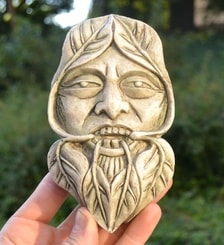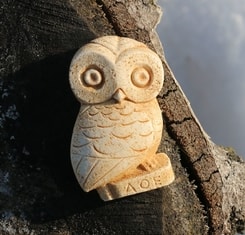-
Catalogue of products
-
- Sale
-
Silver jewellery
-
All in the category Silver jewellery
- Pendants
- Bracelets
- Rings
- Earrings
- Moldavites, czech
- Necklaces
- Golden jewellery
- Torcs - necklaces
- Amber jewelry
- Jewellery sets
- Brooches and buckles
- Silver and stones, jewels
-
Thematic jewelry collections
-
 All in the category Thematic jewelry collections
All in the category Thematic jewelry collections
- Lapponia jewellry
- VIKINGS - bracelets
- Art nouveau jewelry
- Dinosaur pendants
- Mythology collection, ancient cultures
- Nautical silver jewelry
- Filigree and granulated replica jewels
- Garnet jewelry - czech made
- Mystica silver collection - pendants
- Mystica silver collection - earrings
- Mystica collection - silver necklaces
- Historical jewelry
- Zodiac, silver pendants
- Viking jewelry
- Pendants - Historia
-
-
-
Jewellery - bronze, zinc
-
All in the category Jewellery - bronze, zinc
- Amulets and talismans
- Bronze and brass replicas - jewellery
- Gilded jewelry
- Cords, boxes, chains
- Forged jewelry, torcs, bracelets
- Costume jewellery
- Keychains
- Fantasy jewels
- Crowns and tiaras
- Bronze historical jewels
- Chakra, reiki
- Celtic brass jewels, import from Ireland
- Badges, historic jewels
- Scottish clan badges
- Original celtic jewelry
-
-
Replicas - Swords, Axes, Knives
-
All in the category Replicas - Swords, Axes, Knives
- Sharp Blades - throwing knives
- Swords
- Axes, poleweapons
- Daggers
- Knives
- FakeSteel armory
- Maces, war hammers
- Saex knives, scramasax
- Lances, spears
- Archery
- Damascus steel knives
- Falchions and Lange Messers
- Swiss army knives
- HMB - swords, falchions, axes, weapons
- Firearms, cannons
- Viking knives
- Hunting hangers
- Pillow Fight Warriors
- Knives - accessories, sharpeners
- Kitchen knives
-
-
Armour Helmets, Shields
-
T-shirts, Boots
-
Ceramics, Glass
-
Leather Products
-
All in the category Leather Products
- Belts
- Bags, sporrans
- Belt accessories
- Hair clips, accessories, jewellery
- Wallets
- Wristbands
- Leather stamps
- Leather material, furs
- Custom made belts
- Leather masks
- Bottles, hip flasks
- Keychains, whips, other
- Leather care, dyes and stains
- Historical shoemaking
- Leathercraft tools
- Riding shop - horse saddles
- Falconry
- Furs, Reindeer Skins
-
-
Horn Products
-
Smithy Works, Coins
-
Bushcraft, Living History, Crafts
-
All in the category Bushcraft, Living History, Crafts
- Bushcraft
- Forged carving chisels
- Kuksa - Finnish dishes
- Leather, furs, skins, pergamens
- Europe
- Drugstore
- Historical glass beads, replica
- Rocailles Czech glass beads
- Deer antler products
- Craftsman tools, acessory
- Prehistoric ages
- Native americans
- Old Slavs
-
-
 Coins
Coins
-
Shoes, Costumes
-
Drums, Flutes
-
Historical Board Games
-
Pagan decorations
-
All in the category Pagan decorations
- Figures, lamps, cups
- Vánoční ozdoby
- Boxes, pencil cases
- Mugs, goblets, scarves
- Dragons
- Antler furniture, lamps
- Animal figures
- Historical miniatures
- Wall plaques, clock
- Pictures
- Products from antler, wood
- Exterior decorations
- Scrolls, posters, puzzle
- Tin figures, goblets
-
-
Woolen products, Ireland
-
 Wood
Wood
-
 Wargaming
Wargaming
-
Licensed Merch - films, games
-
All in the category Licensed Merch - films, games
- Warhammer 40K
- 2001 Space Odyssey
- AC/DC
- Alien
- Antman
- Assassin's Creed
- Asterix
- Avatar
- Avengers - Infinity War
- Back to the Future
- Batman
- Beetlejuice
- Big Bang Theory
- Blade Runner
- Bud Spencer - Terence Hill
- CBGBs
- Clockwork Orange
- Deadpool
- Deep Purple
- E.T. the Extra-Terrestrial
- Frank Zappa
- FULL METAL JACKET
- GAME OF THRONES
- Ghostbusters
- Godfather
- Gremlins
- GUARDIANS OF THE GALAXY
- HAN SOLO MOVIE
- Harry Potter
- Iron Maiden
- IT
- Jaws
- James Bond 007
- Jurassic Park
- King Kong
- Knight Rider
- KISS
- Led Zeppelin
- LOONEY TUNES
- LORD OF THE RING
- Magic the Gathering
- Marvel
- VIKINGS
- Metallica
- Metro Exodus
- Mortal Kombat
- Mr Pickles
- NASA
- Nirvana
- Peaky Blinders
- Pearl Jam
- Pink Floyd
- Planet of the Apes - Planeta opic
- Pokémon
- Predator
- Queen
- Rambo
- Rick and Morty
- Robocop
- Spiderman
- Star Wars
- Suicide Squad
- Superman
- Teenage Mutant Ninja Turtles - Želvy ninja
- The Doors
- The Witcher
- Thor Ragnarok
- Vikings
- World of Warcraft
- Rocky
- Terminator
- Dračí Hlídka
-
-
 Magic
Magic
-
Books, Maps, Stickers
-
Historical Tents
-
Sculptures, Garden Decor
-
 Mead, Honey
Mead, Honey
-
 Moldavites, minerals, fossils
Moldavites, minerals, fossils
-
Cosmetics
-
Archeology, Geology
-
Interior design
-
 Yule decorations, Glass Beads
Yule decorations, Glass Beads
-
Aromatherapy
-
FILM and props
-
 Outdoor - Bushcraft
Outdoor - Bushcraft
- Naav
- Arma Epona
- WHOLESALE lots
- Gift Certificates
- SPECIAL OFFER, discounts
-
- Log in
- Create an account
- Wholesale
- Contact us
- Country (English)
- Currency ($ - USD)


Nothing was added in your basket.
- Sculptures, Garden Decor
- Europe
- Antiquity - roman, greek sculptures

Antiquity - roman, greek sculptures
Replicas of Sculptures (Greece, Ancient Rome). In the Classical Period in Greece we meet with beautifully depicted Gods and Goddesses, boys (often nude) and girls. Man as such was idealized and the Greeks tried to depict him as beautifully as possible. In the later Hellenistic period we see a wider array of motifs, which included childhood, old age, death, people engaged in ordinary professions, and there is an attempt to capture movement and states of mind. Statues were painted or gilded and had stones in their eye sockets. They were often draped with fabrics or covered with bronze or gold sheets. Dozens of them would be installed in temples or other holy places. Generally, their facial features had little individuality, and the period’s erotic statues (such as statues of Aphrodite) were no exception. Smaller clay statues served as votive gifts to the gods as well as decorations.
The Romans were influenced by Etruscan art (especially tombs and sarcophagi: stone cases for coffins), but usually they reproduced Greek artwork. Some of the Greek originals were lost to the ages, and have only been preserved for us only in the Roman copies. However, while the Greeks often used bronze in their works, the Romans preferred marble. Like the Greeks, they also preferred their statues to be colourful, but there were other differences: they were partial to realistic likenesses of politicians and emperors, sometimes rendered as equestrian statues, and had a fondness for portraits of children as well. Some other important works are reliefs carved into triumphal arches and victory columns - such as Trajan’s Column in Rome - that commemorate historic events. One more category is of small, luxurious items: these include statues decorated with precious materials, or carvings and intaglios carved into gemstone cameos and signet rings or into shells or glass.






















